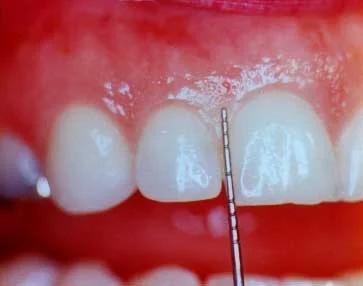Periodontal disease follows tooth decay as the most prevalent condition effecting the oral cavity. In fact, over half of all Americans have some type of problem with their periodontal tissues. It is important to understand the differences between the two main categories of periodontal disease- gingivitis and periodontitis.
The word "periodontal" identifies the tissues surrounding the teeth: the gums, bone, connective tissue and ligaments. These structures live in a delicate balance with the bacteria that exist naturally in our mouths. Over time, poor oral hygiene can allow the bacteria to colonize and grow around the teeth, leading to inflammation of the gum tissue. This first stage in periodontal disease is known as gingivitis. At this point, you might notice puffy, red gums that bleed during brushing or flossing.
As the inflammation progresses and the bacterial colonies grow, the jaws start to undergo bony changes. Our bones will begin to grow away from the source of infection, leading to recession, pocket formation and loose teeth. These changes are associated with the more advanced form of periodontal disease known as periodontitis.
Fortunately, there are a number or dental procedures aimed at stopping or reversing the effects of periodontal disease. It all starts with a dental exam to determine the extent of damage and assign an appropriate cleaning regimen. Patients with healthy tissue might just need a simple preventative cleaning, while others may benefit from a more intense procedure- such as scaling and root planing. If you would like to know more about periodontal disease, what causes it and how we can treat it, please contact our office!






